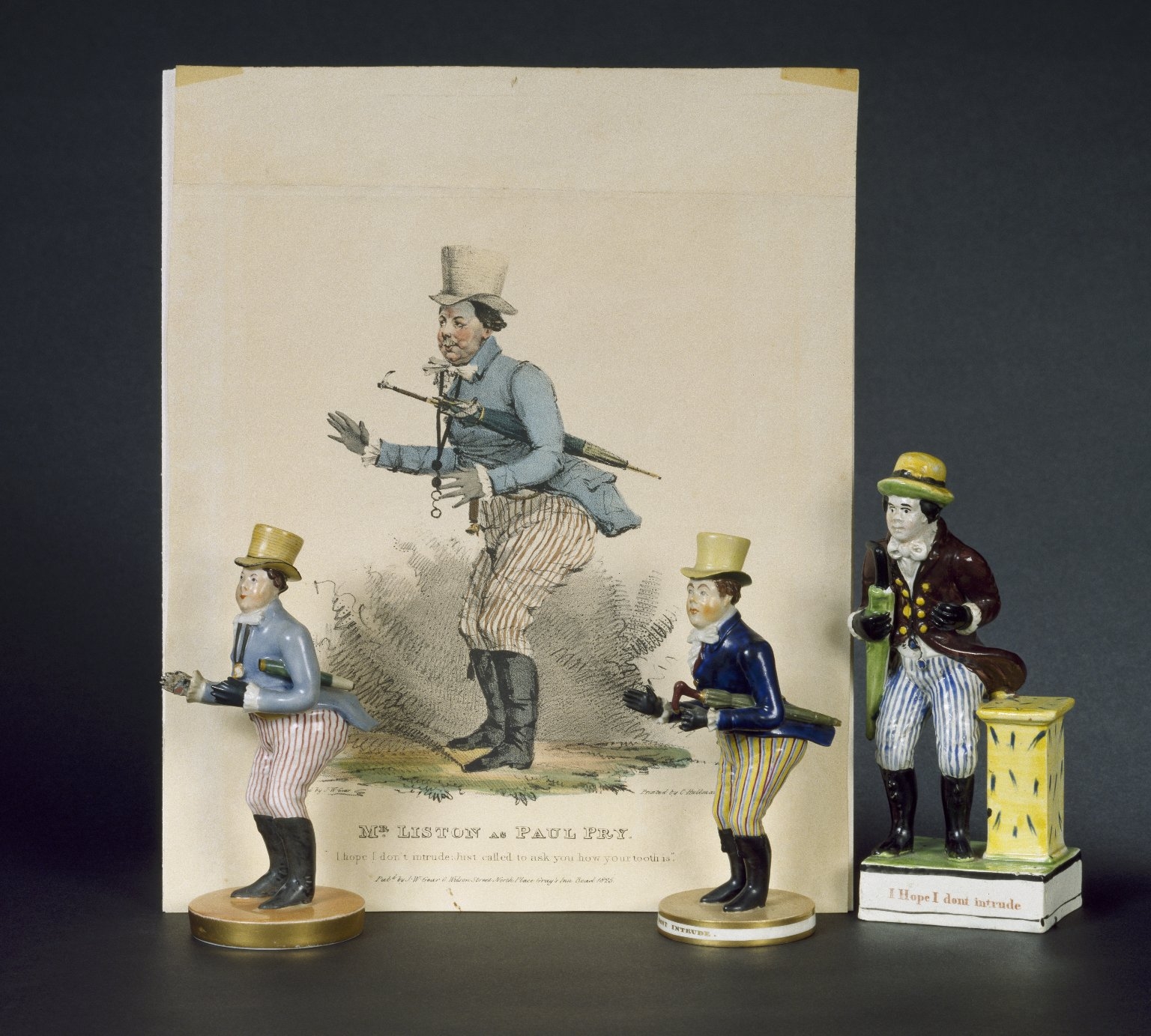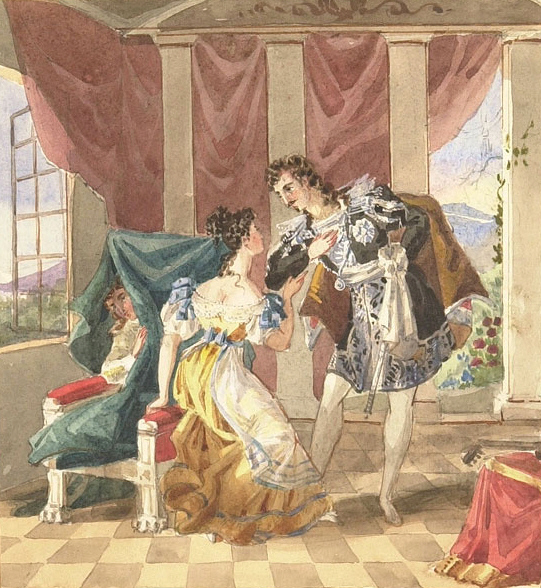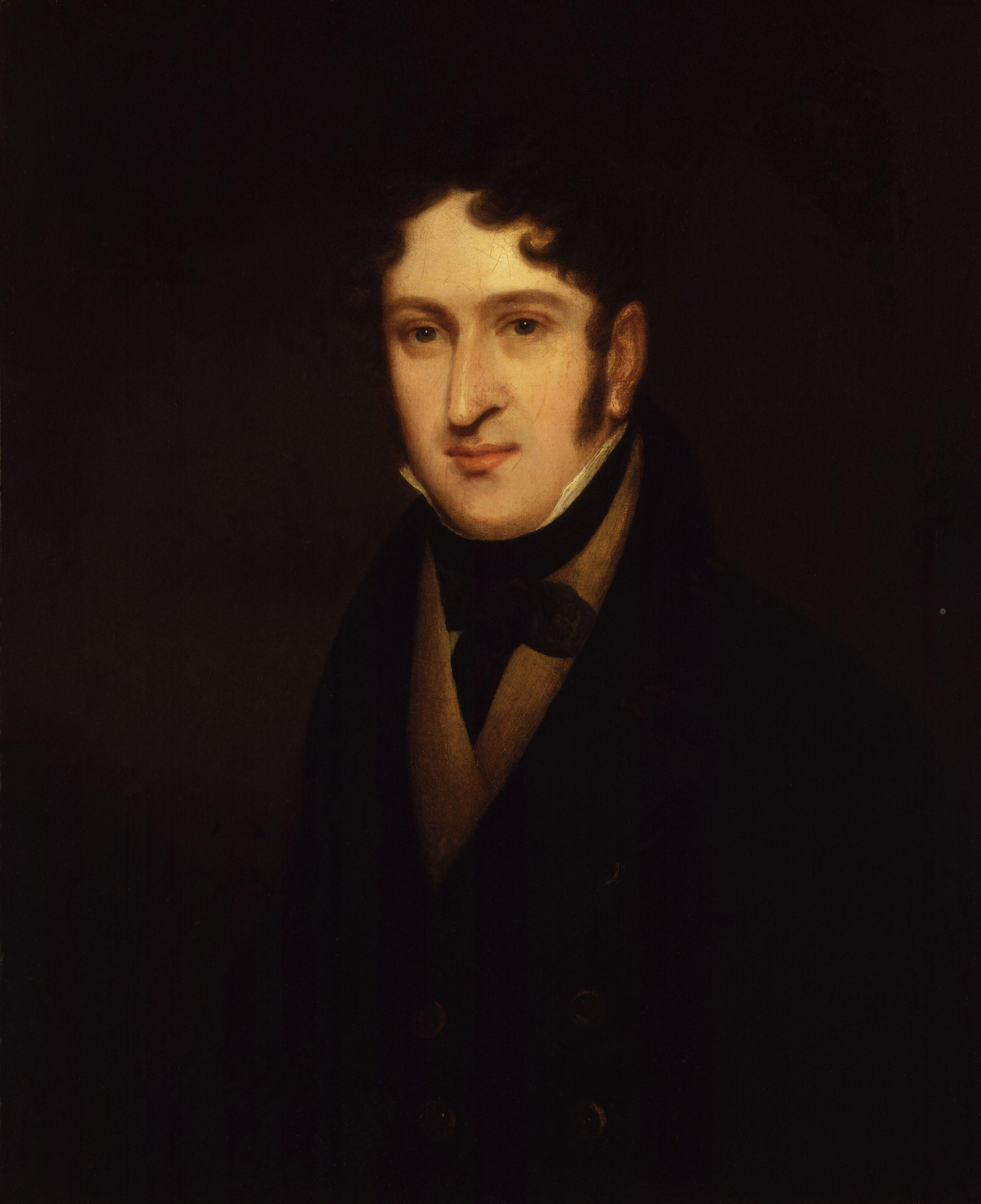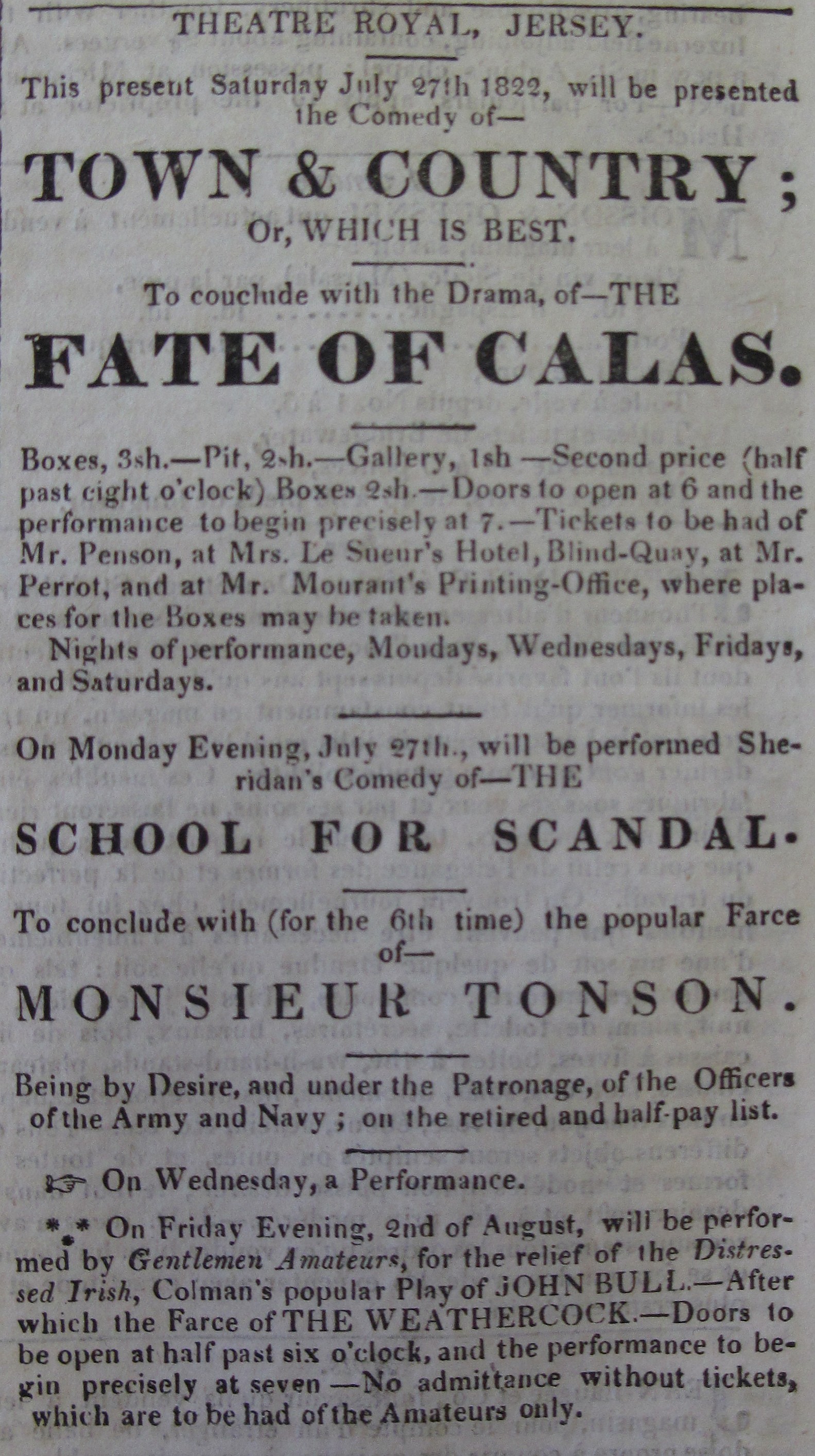|
Catherine Stephens, Countess Of Essex
Catherine Stephens, Countess of Essex (18 September 1794 – 22 February 1882) was an English operatic singer and actress, once known as Kitty Stephens. Early life Stephens was the daughter of Edward Stephens, a carver and gilder in Park Street, Grosvenor Square, and was born on 18 September 1794. In 1807, having shown, like her elder sisters, some musical ability, she was placed under Gesualdo Lanza, with whom she remained five years. Under his care she sang in Bath, Bristol, Southampton, Ramsgate, Margate and other places, appearing early in 1812 in subordinate parts at the Pantheon as member of an Italian opera company, headed by Teresa Bertinotti. At the close, in 1812, of her engagement with Lanza, her father placed her under Thomas Welsh, as whose pupil she sang anonymously on 17 and 19 November in Manchester. Operatic and acting career On 23 September 1813, she appeared at Covent Garden as Mandane in ''Artaxerxes'', obtaining a conspicuous success, especially in the ... [...More Info...] [...Related Items...] OR: [Wikipedia] [Google] [Baidu] |
Kitty Stephens, Later Countess Of Essex (1794-1882) By George Henry Harlow
Kitty or Kittie may refer to: Animals * Cat, a small, domesticated carnivorous mammal ** Kitten, a young cat Film * Kitty Films, an anime production company in Japan * Kitty (1929 film), ''Kitty'' (1929 film), based on the Deeping novel; the first British talking picture * Kitty (1945 film), ''Kitty'' (1945 film), starring Paulette Goddard * ''Kitty'' (2002 film), a Kannada film starring Darshan * Kitty (2016 film), ''Kitty'' (2016 film), a short film written and directed by Chloe Sevigny Games and money * Kitty, Glossary of poker terms#K, in poker terminology, a pool of money built by collecting small amounts from certain pots, often used to buy refreshments, cards, and so on * Kitty, Glossary of card game terms#K, in card game terminology, additional cards dealt face down in some card games * Kitty, a colloquial term for prize money or other moneys collected by a group Music * Kittie, an all-female Canadian metal band * Kitty (song), "Kitty" (song), by the Presidents of The ... [...More Info...] [...Related Items...] OR: [Wikipedia] [Google] [Baidu] |
Love In A Village
''Love in a Village'' is a ballad opera in three acts that was composed and arranged by Thomas Arne. A pastiche, the work contains 42 musical numbers of which only five were newly composed works by Arne. The other music is made up of 13 pieces borrowed from Arne's earlier stage works, a new overture was by C. F. Abel, and 23 songs by other composers, including Bishop, Boyce, Geminiani, Giordani, and Galuppi, albeit with new texts. The English libretto, by Isaac Bickerstaffe, is based on Charles Johnson’s 1729 play ''The Village Opera''. The opera premiered at the Royal Opera, Covent Garden in London on 8 December 1762.John A. Parkinson: "Love in a Village", ''Grove Music Online'' ed. L. Macy (Accessed February 16, 2009)(subscription access)/ref> One of its best known songs is the '' Miller of Dee''. History ''Love in a Village'' was received enthusiastically at its premiere and became one of Arne's more popular operas, enjoying 40 performances in its first season alone. T ... [...More Info...] [...Related Items...] OR: [Wikipedia] [Google] [Baidu] |
John Liston
John Liston (c. 1776 – 22 March 1846), English comedian, was born in London. He made his public debut on the stage at Weymouth as Lord Duberley in '' The Heir at Law''. After several dismal failures in tragic parts, some of them in support of Mrs Siddons, he discovered accidentally that his forte was comedy, especially in the personation of old men and country boys, in which he displayed a fund of drollery and broad humour. An introduction to Charles Kemble led to his appearance at the Haymarket on 10 June 1805 as Sheepface in the ''Village Lawyer'', and his association with this theatre continued with few interruptions until 1830. '' Paul Pry'', the most famous of all his impersonations, was first presented on 13 September 1825 and soon became, thanks to his creative genius, a real personage. Liston remained on the stage until 1837; during his last years his mind failed, and he died on 22 March 1846. He had married in 1807 Miss Tyrer (d. 1854), a singer and actress. ... [...More Info...] [...Related Items...] OR: [Wikipedia] [Google] [Baidu] |
Marriage Of Figaro
''The Marriage of Figaro'' ( it, Le nozze di Figaro, links=no, ), K. 492, is a ''commedia per musica'' ( opera buffa) in four acts composed in 1786 by Wolfgang Amadeus Mozart, with an Italian libretto written by Lorenzo Da Ponte. It premiered at the Burgtheater in Vienna on 1 May 1786. The opera's libretto is based on the 1784 stage comedy by Pierre Beaumarchais, ''La folle journée, ou le Mariage de Figaro'' ("The Mad Day, or The Marriage of Figaro"). It tells how the servants Figaro and Susanna succeed in getting married, foiling the efforts of their philandering employer Count Almaviva to seduce Susanna and teaching him a lesson in fidelity. Considered one of the greatest operas ever written, it is a cornerstone of the repertoire and appears consistently among the top ten in the Operabase list of most frequently performed operas. In 2017, BBC News Magazine asked 172 opera singers to vote for the best operas ever written. ''The Marriage of Figaro'' came in first out ... [...More Info...] [...Related Items...] OR: [Wikipedia] [Google] [Baidu] |
Isaac Pocock
Isaac Pocock (2 March 1782 – 23 August 1835) was an English dramatist and painter of portraits and historical subjects. He wrote melodramas, farces and light operatic comedies, many being stage adaptations of existing novels. Of his 40 or so works, the most successful was ''Hit and Miss'' (1810), a musical farce.Christine L. Krueger, George Stade, Karen Karbiener. ''Encyclopedia of British Writers: 19th and 20th Centuries'' (Infobase Publishing, 2003) p. 274-5. The mariner Sir Isaac Pocock (1751–1810) was his uncle. Life Isaac Pocock was born in Bristol on 2 March 1782, the eldest son of Nicholas Pocock, marine painter, and Ann Evans (daughter of John Evans of Bristol). William Innes Pocock (1783–1836), a naval officer and author, was his brother. About 1798, Isaac became a pupil of George Romney, with Thomas Alphonso Hayley, son of the writer William Hayley, as a fellow student. After Romney's death in 1802, he studied under Sir William Beechey.DNB, 1885–1900, vol. 4 ... [...More Info...] [...Related Items...] OR: [Wikipedia] [Google] [Baidu] |
Thomas Morton (playwright)
Thomas Morton (1764 – 28 March 1838) was an England, English playwright. Life Morton was born in the city of Durham, England, Durham. He was the youngest son of John and Grace Morton of Whickham, County Durham. 26 January 1935, p. 69. After the death of his father he was educated at Soho Square school at the charge of his uncle Maddison, a stockbroker. Here amateur acting was in vogue, and Morton, who played with Joseph George Holman, acquired a taste for the theatre. He entered at Lincoln's Inn, 2 July 1784, but was not called to the bar. His first drama, ''Columbus, or A World Discovered,'' 8vo, 1792, an historical play in five acts, founded in part upon '' Les Incas '' of Marmontel, was produced with success at Covent Garden, 1 December 1792, Holman playing the part of Alonzo. ''Children i ... [...More Info...] [...Related Items...] OR: [Wikipedia] [Google] [Baidu] |
John Tobin (dramatist)
John Tobin (28 January 17707 December 1804) was a British playwright, who was for most of his life unsuccessful, but in the year of his death made a hit with ''The Honey Moon''. Other plays were ''The Curfew'' and ''The School for Authors''. Life Tobin was born in Salisbury, the son of James Tobin, a merchant, and his wife, born Webbe, the daughter of a rich West India sugar planter. George Tobin was his elder brother. Another brother, James Webbe Tobin (died 1814), an acquaintance of Charles Lamb and Samuel Taylor Coleridge, went to Nevis. About 1775 the father set out with his wife to Nevis in the West Indies. The children were left behind, and John was placed for a while under the care of Dr. Richard Mant, the father of Richard Mant the bishop, at Southampton. After the American War of Independence, James Tobin having returned to England and settled at Redland, near Bristol, John was sent to Bristol Grammar School under Dr. Charles Lee. In 1787 he left Bristol to be article ... [...More Info...] [...Related Items...] OR: [Wikipedia] [Google] [Baidu] |
Guy Mannering
''Guy Mannering; or, The Astrologer'' is the second of the Waverley novels by Walter Scott, published anonymously in 1815. According to an introduction that Scott wrote in 1829, he had originally intended to write a story of the supernatural, but changed his mind soon after starting. The book was a huge success, the first edition selling out on the first day of publication. Composition Scott began the composition of ''Guy Mannering'' in the last days of 1814, immediately after completing his last long narrative poem '' The Lord of the Isles''. Writing with remarkable speed, he finished it by mid-February 1815. In a letter dated 19 January 1815, Scott writes: "I want to shake myself free of '' Waverley'', and accordingly have made a considerable exertion to finish an odd little tale within such time as will mystify the public... W. Erskine, and Ballantyne, are of opinion that it is much more interesting than ''Waverley''." Editions ''Guy Mannering'' appeared in three volu ... [...More Info...] [...Related Items...] OR: [Wikipedia] [Google] [Baidu] |
Daniel Terry
Daniel Terry (1780?–1829) was an English actor and playwright, known also as a close associate of Sir Walter Scott. Life He was born in Bath about 1780, and was educated at the Bath grammar school and subsequently at a private school at Wingfield (?Winkfield), Wiltshire, under the Rev. Edward Spencer. During five years he was then a pupil of Samuel Wyatt, the architect. Actor in the provinces Having first played at Bath Heartwell in the ''Prize'', Terry left Wyatt to join (in 1803 to 1805) the company at Sheffield under the management of William Macready the Elder. His first appearance was as Tressel in ''Richard III'' and was followed by other parts, Thomas Cromwell in ''Henry VIII'' and Edmund in ''King Lear''. Towards the close of 1805 he joined Stephen Kemble in the north of England. On the breaking up in 1806 of Kemble's company, he went to Liverpool and made a success which recommended him to Henry Siddons, who brought him out in Edinburgh, 29 November 1809, as Bertra ... [...More Info...] [...Related Items...] OR: [Wikipedia] [Google] [Baidu] |
Midsummer Night's Dream
''A Midsummer Night's Dream'' is a comedy written by William Shakespeare 1595 or 1596. The play is set in Athens, and consists of several subplots that revolve around the marriage of Theseus and Hippolyta. One subplot involves a conflict among four Athenian lovers. Another follows a group of six amateur actors rehearsing the play which they are to perform before the wedding. Both groups find themselves in a forest inhabited by fairies who manipulate the humans and are engaged in their own domestic intrigue. The play is one of Shakespeare's most popular and is widely performed. Characters * Theseus—Duke of Athens * Hippolyta—Queen of the Amazons * Egeus—father of Hermia * Hermia—daughter of Egeus, in love with Lysander * Lysander (A Midsummer Night's Dream), Lysander—in love with Hermia * Demetrius (Shakespeare), Demetrius—suitor to Hermia * Helena (A Midsummer Night's Dream), Helena—in love with Demetrius * Philostrate—Master of the Revels * Peter Quince—a ... [...More Info...] [...Related Items...] OR: [Wikipedia] [Google] [Baidu] |
Beaumont And Fletcher
Beaumont and Fletcher were the English dramatists Francis Beaumont and John Fletcher, who collaborated in their writing during the reign of James I (1603–25). They became known as a team early in their association, so much so that their joined names were applied to the total canon of Fletcher, including his solo works and the plays he composed with various other collaborators including Philip Massinger and Nathan Field. The first Beaumont and Fletcher folio of 1647 contained 35 plays; 53 plays were included in the second folio in 1679. Other works bring the total plays in the canon to about 55. While scholars and critics will probably never render a unanimous verdict on the authorship of all these plays—especially given the difficulties of some of the individual cases—contemporary scholarship has arrived at a corpus of about 12 to 15 plays that are the work of both men. (See the individual pages on Beaumont and Fletcher for more details.) Works The plays general ... [...More Info...] [...Related Items...] OR: [Wikipedia] [Google] [Baidu] |
William Dimond
William Fisher Peach Dimond (11 December 1781 – c1837) was a playwright of the early 19th-century who wrote about thirty works for the theatre, including plays, operas, musical entertainments and melodramas. Life He was born in Bath in Somerset in December 1781, the eldest surviving son of William Wyatt Dimond (1750–1812), an actor and theatrical manager, and his wife, Matilda Martha, ''née'' Baker (1757–1823). His father was the manager at the Old Orchard Street Theatre and later the Theatre Royal, Bath together with the Theatre Royal in Bristol. William Dimond received his education from the Rev. James Morgan D.D.; and by 1807 was a member 'of the Honourable Society of the Inner Temple', having been articled in 1798. Dimon contributed Della Cruscan poems to the ''Morning Herald'' under the pen name 'Castalio'. His work ''Petrarchal Sonnets, and Miscellaneous Poems'' was published in 1800 by private subscription and dedicated to the Duchess of York; however, the ... [...More Info...] [...Related Items...] OR: [Wikipedia] [Google] [Baidu] |








